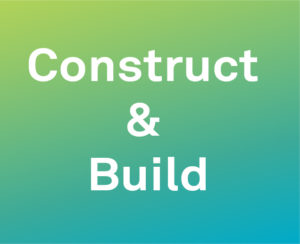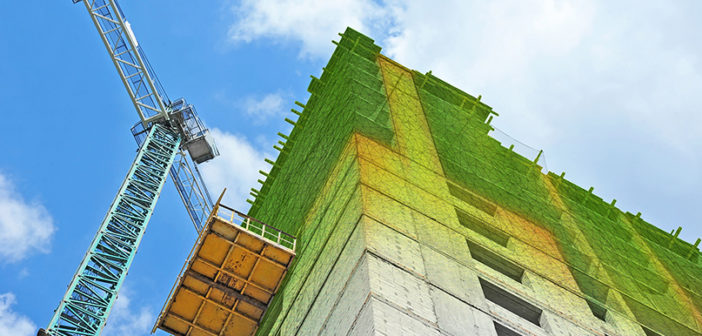According to Deloitte, the construction industry, for residential and commercial purposes, has increased its investments in digital and is preparing to move towards connected capabilities. This is to support initiatives such as smart cities, urban air mobility and climate change programmes, as well as enhance efficiencies, reduce costs, and improve margins. In this respect, surveyors who utilise reality capture technology will be able to play a big part in revolutionising how residential and commercial buildings are designed, built and maintained.
In addition, the construction industry is witnessing an increased emphasis on enabling a ‘circular economy’, which means reality capture technology is increasingly not just employed in new building projects but for renovations or refurbishment of existing buildings. When demolishing buildings to make way for new projects, surveyors are called upon to document and capture existing conditions to help identify materials for reuse in other projects.
These new initiatives present new challenges to surveyors working in the industry but also present an opportunity for surveyors to become the ‘data managers’ for residential and commercial projects.
This blog looks at the role reality capture will play in each of the construction lifecycle phases, the associated technologies used, and the role the surveyor plays now and in the future.
 Capture and design – where accuracy in building projects is vital
Capture and design – where accuracy in building projects is vital
Accuracy in this phase of the project is critical. Designs for construction projects must be based on accurate data because, if not, assets can end up in the wrong locations or may not fit when brought on-site. This then creates difficult stakeholder management, wastes time, and incurs extra costs.
The use of reality capture technology facilitates greater accuracy by gaining a precise and clear understanding of a site, its design layout, and its associated challenges. When it’s time for construction to begin, this results in more efficient workflows.
Reality capture technology is used to capture a complete set of the initial project landscape in the form of point clouds and images to create a BIM model of the existing conditions. This is also known as Scan-to-BIM. Pre-construction deliverables strongly influence the future success in terms of costs, time, and scope of the downstream construction activities.
For outdoor data capture of roofs and facades, products such as the Leica BLK2FLY flying laser scanner are ideal. It can be programmed to autonomously scan building exteriors which otherwise would be difficult or dangerous to access. Inside a building, handheld imaging laser scanners such as the Leica BLK2GO help with fast data capture on the move, or the compact Leica BLK360 captures a full scan with spherical images in only 20 seconds.
For large commercial properties, the Leica ScanStation P-Series survey-grade 3D laser scanner can assist in scanning more demanding projects of a large industry complex or generate 3D data for integration into BIM.
Surveyors can improve their work and grow their business by delivering projects faster, and this is where powerful software can help speed up their workflow in the design phase. For work directly in the field, surveyors can use the Leica Cyclone FIELD 360 mobile device app to automatically capture, pre-register and visualise captured scan data. This software provides surveyors with a real-time, in-field platform to examine scan data quality and verify that enough data has been collected, alongside Leica Cyclone 3DR Touch Mode, which has tailored workflows for construction and inspection tasks. Workflows can be accelerated further using software add-ons such as Quick Plan, which provides a deliverable directly in the field. This deliverable can then be shared via Leica TruView Cloud with project colleagues back in the office to view, measure and annotate data from any browser or device, at any time. This saves time by allowing the data collected to be directly passed on to downstream activities.
The surveyor’s end goal is that all designs match reality ahead of the next project phase, the actual construction of the residential or commercial build.
 Construct & Build – digital twin for transparency and higher productivity
Construct & Build – digital twin for transparency and higher productivity
In the design phase, point cloud data collected by reality capture technology leads to accurate 3D/BIM models. During each construction stage, these highly accurate models allow for early identification of deviations to help reduce cost implications. Providing stakeholders and managers with an accurate digital twin representing the construction progress brings complete visibility that enables early verification for deviation and taking informed decisions.
Surveyors choose reality capture technology for many building and construction projects to scan at various stages of the construction of the building. 3D laser scanners, such as the Leica RTC360 and the Leica Nova MS60 MultiStation enable the following best practices to be applied during the construction phase:
- Clash detection: ensure that building components (e.g. air conditioning) fit correctly
- Accuracy validation: to avoid costly rework by analysing and reporting deviation from the design
- Document site condition for progressive as-built verification
- Deformation monitoring of the surrounding buildings to improve public safety and mitigate project risks
When floor flatness or wall verticality needs to be measured or surfaces inspected, the Leica Nova MS60 MultiStation used with Leica Captivate software is the perfect solution. The MS60 combined with the Inspect Surface software app measures the surface flatness of floors as concrete is poured in, as well as measuring wall verticality. An essential feature of this is when differences are identified between design and as-built, these are immediately shown via the MS60 MultiStation and can be marked up in real-time in the field for corrective action. Previously, such decisions would have only been made after returning to the office and post-processing the measured data. This surveying functionality saves construction companies enormous amounts of time and money as potential errors are identified early to minimise the costs associated with such errors.
 Toward a circular economy through building refurbishment and reality capture
Toward a circular economy through building refurbishment and reality capture
Enabling the ‘circular economy’ is part of the solution to climate change. It is designed to maximise the value of products, services and systems and minimise waste at the same time and is based on ‘make, use and reuse’ instead of ‘make, use, dispose of’. In terms of construction, this means focusing on existing buildings, refurbishing and reusing them, and upgrading them to make them more efficient. An example is when a building is set to be demolished, it must be adequately documented as a digital twin. Some of the construction materials used in its original build can be reused and recycled sustainably in the circular economy.
Reality capture technology can be used to identify assets on a building, such as slabs of concrete or steel and wood structures that can be reused for another project, reducing waste and rework. Refurbishment can include better insulation and retrofitting to make buildings more efficient. All this helps to reduce energy costs which in turn reduces emissions and increases the building’s sustainability.
When a building reaches end of life and is properly documented with a digital twin, construction materials are classified to be reused, meaning surveyors acting as the ‘data managers’ can contribute to the sustainability of building projects through their daily workflows.
Surveyors can create a digital twin of a structure with historic buildings to identify damage and help understand what needs maintenance over time. This type of work may not be standard practice for most surveyors, but using reality capture technology can open a new line of business for them as their role evolves. PB Grassl, a German architectural firm that focuses on protecting sacred buildings and monuments, is a prime example. It worked with Leica Geosystems to measure and document the ancient church of St Severin in Bavaria for preservation and future renovation works.
 Redefining the role of the surveyor as the data manager
Redefining the role of the surveyor as the data manager
Surveyors bring their knowledge of geospatial workflows to construction projects, ensuring the highest accuracy by stitching together all the collected data. This is an essential role and has become what is now also known as the ‘data manager’, and the reason surveyors add the most value.
Although reality capture technology can be used by non-surveyors – particularly the less complex and more straightforward products and applications – surveyors bring together the data throughout all the stages of construction in commercial and residential buildings. This creates a unified digital twin of the project, adding control points to ensure the data fit together accurately.
 Adopting reality capture to win new business
Adopting reality capture to win new business
Using the latest reality capture technology helps surveying firms attract and retain talent. It makes their work more efficient and accurate, and it is also attractive to next-generation professionals coming into the surveying business who want to work with the latest solutions.
Those surveyors embracing change have a competitive advantage when winning new business, offering new services and higher value deliverables. As the adoption of reality capture technology increases, investment and digitalisation address skill shortages and health and safety concerns. The benefits are enhanced efficiencies, reduced risk, cost savings, and a lower environmental impact. Harnessing reality capture data helps better plan and execute projects from design to completion, operation and maintenance and ultimately to better sustainable practices.
Click here to find out how we can help you to deliver your next building project on time, safely and as efficiently as possible.
Improve your surveying skills for commercial and residential building infrastructure.














